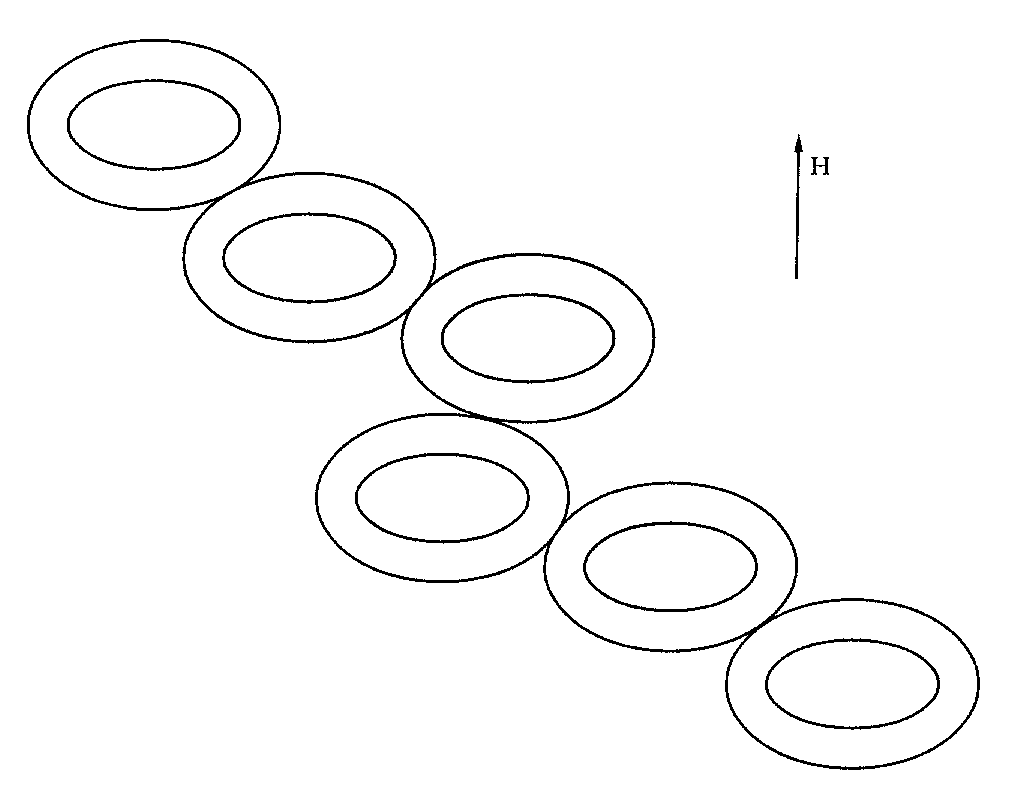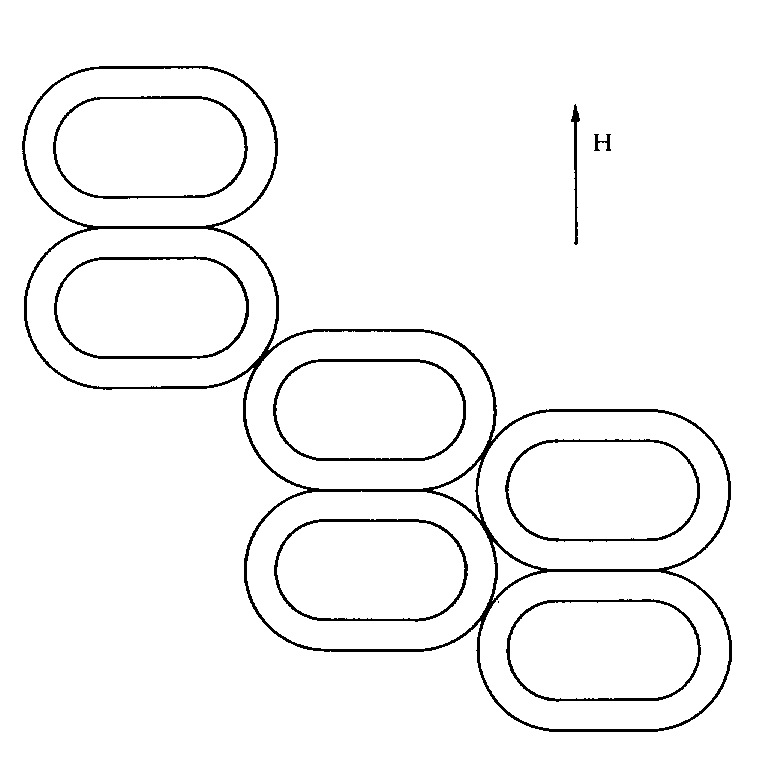

Figure 2. Cross-section of a lipid tubule on a plane orthogonal to
its axis. The thickness h of the tubule is fixed.
Hence, we shall use an elastic free-energy density fel given by
Lipid molecules are anisotropic, and so also are the layers they make up: the response
to an external field is different, depending whether the field is normal to the layer
or tangent to it. If we apply a homogeneous magnetic field
H=Hezwe can write the total free energy per unit length of a thick tubule as
All layers in ![]() are parallel and equidistant curves. An intrinsic way
to describe them is by introducing confocal coordinates, as done in Virga &
Fournier [8]. If the outer boundary of
are parallel and equidistant curves. An intrinsic way
to describe them is by introducing confocal coordinates, as done in Virga &
Fournier [8]. If the outer boundary of ![]() is taken as the
reference curve c for the texture and it is parametrized by its
arc-length s, it is possible to express the free energy (5) as a
functional of c:
is taken as the
reference curve c for the texture and it is parametrized by its
arc-length s, it is possible to express the free energy (5) as a
functional of c:
We seek for solutions symmetric with respect to both coordinate axes, as shown in Figure 2. A way to make the equilibrium problem associated with (6) tractable is by changing F into a functional of the focal curve f of the texture, as in [9] (see Figure 3).

Figure 3. The reference curve c and its focal curve f.
As shown in [10], whenever a functional
![]() of a plane
curve c with prescribed length L is given by
of a plane
curve c with prescribed length L is given by
By using (9), one then obtains the angle ![]() as a function of
as a function of
![]() (see [10]):
(see [10]):

Figure 4. (a,b) Regular solution for
A/2h2=10 and
![]() ,
,
![]() ,
respectively. (c,d) Regular solution for a thinner tubule with
A/2h2=103and
,
respectively. (c,d) Regular solution for a thinner tubule with
A/2h2=103and
![]() ,
,
![]() ,
respectively. These latter values
are such that the magnetic field has one strength for the pair (a,c), and another one
for the pair (b,d), but it is equal for both solutions in one and the same pair.
,
respectively. These latter values
are such that the magnetic field has one strength for the pair (a,c), and another one
for the pair (b,d), but it is equal for both solutions in one and the same pair.
We have just learnt that the external magnetic field can deform a tubule. We now consider an assembly of tubules equal in shape, allowing for mutual adhesion between them. The contact forces and the external ones may compete in establishing the stable equilibrium pattern. Besides the regular solutions just found, we can search for solutions exhibiting flat sides along which any tubule adheres to the adjacent ones. It has been shown in [10] that for every strength of the applied field there is a critical value wc of the adhesion potential, above which, in the stable configuration of an assembly, each tubule adheres to its neighbours along two opposite flat sides orthogonal to the field, as shown in Figure 5
 b)
b)

Figure 5. Sketches for an assembly of tubules. In (a) they adhere to one
another, whereas in (b) they do not.
When w<wc, the tubules in a stable assembly do not adhere to one another: they may touch
along lines which bear no energy. Figure 6 illustrates the stability diagram corresponding to
one value of
![]() .
The function g(b) is defined as
.
The function g(b) is defined as
![]() .
.

Figure 6. Stability diagram for an assembly of tubules, when
A/2h2=5.
The regions ![]() and
and ![]() are separated by the graph of g. The points in
are separated by the graph of g. The points in ![]() and
and ![]() represent, respectively, regular and singular energy minimizers. In
represent, respectively, regular and singular energy minimizers. In ![]() ,
the tubules adhere to one another.
,
the tubules adhere to one another.